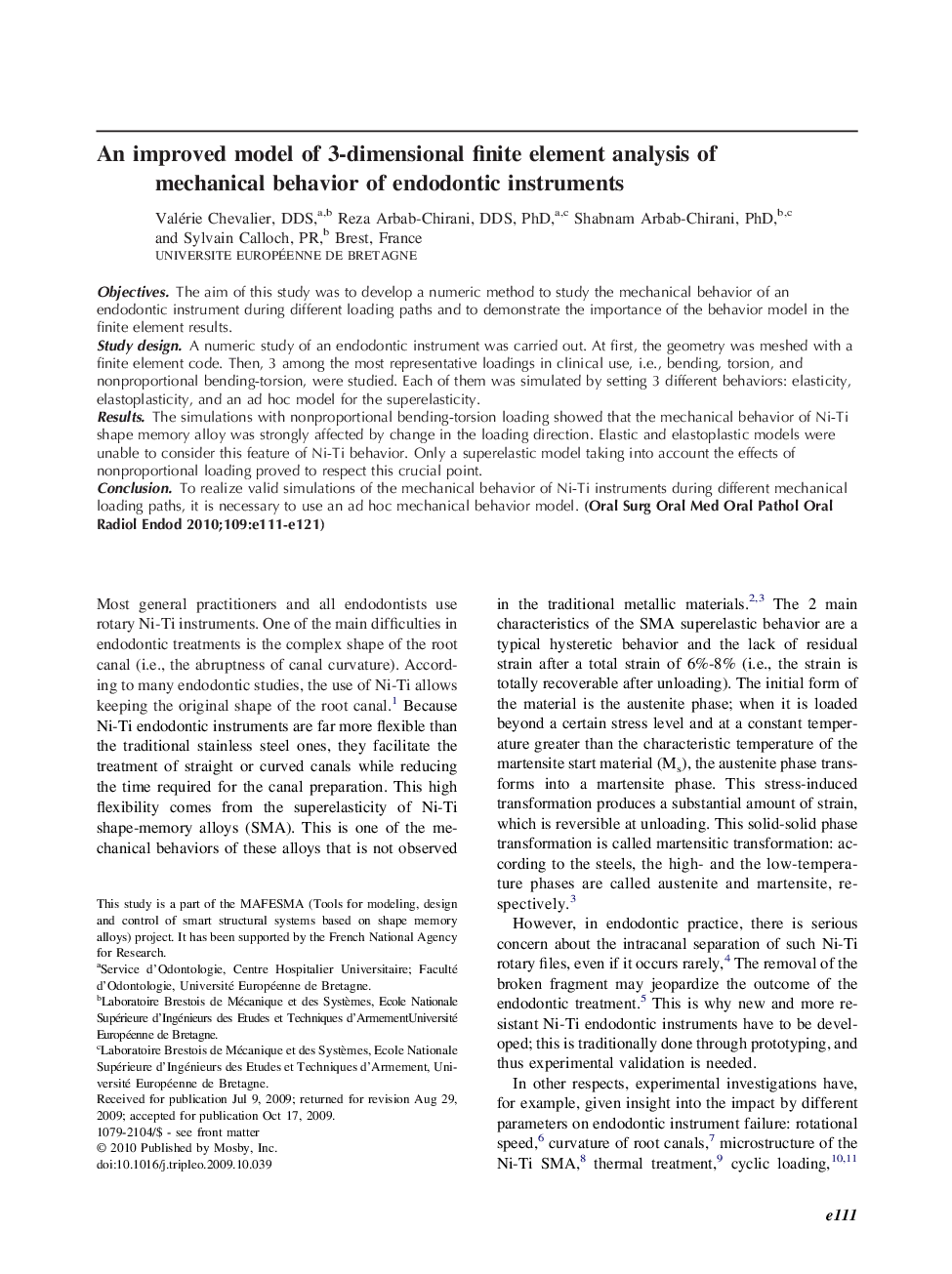| Article ID | Journal | Published Year | Pages | File Type |
|---|---|---|---|---|
| 3167707 | Oral Surgery, Oral Medicine, Oral Pathology, Oral Radiology, and Endodontology | 2010 | 11 Pages |
ObjectivesThe aim of this study was to develop a numeric method to study the mechanical behavior of an endodontic instrument during different loading paths and to demonstrate the importance of the behavior model in the finite element results.Study designA numeric study of an endodontic instrument was carried out. At first, the geometry was meshed with a finite element code. Then, 3 among the most representative loadings in clinical use, i.e., bending, torsion, and nonproportional bending-torsion, were studied. Each of them was simulated by setting 3 different behaviors: elasticity, elastoplasticity, and an ad hoc model for the superelasticity.ResultsThe simulations with nonproportional bending-torsion loading showed that the mechanical behavior of Ni-Ti shape memory alloy was strongly affected by change in the loading direction. Elastic and elastoplastic models were unable to consider this feature of Ni-Ti behavior. Only a superelastic model taking into account the effects of nonproportional loading proved to respect this crucial point.ConclusionTo realize valid simulations of the mechanical behavior of Ni-Ti instruments during different mechanical loading paths, it is necessary to use an ad hoc mechanical behavior model.
